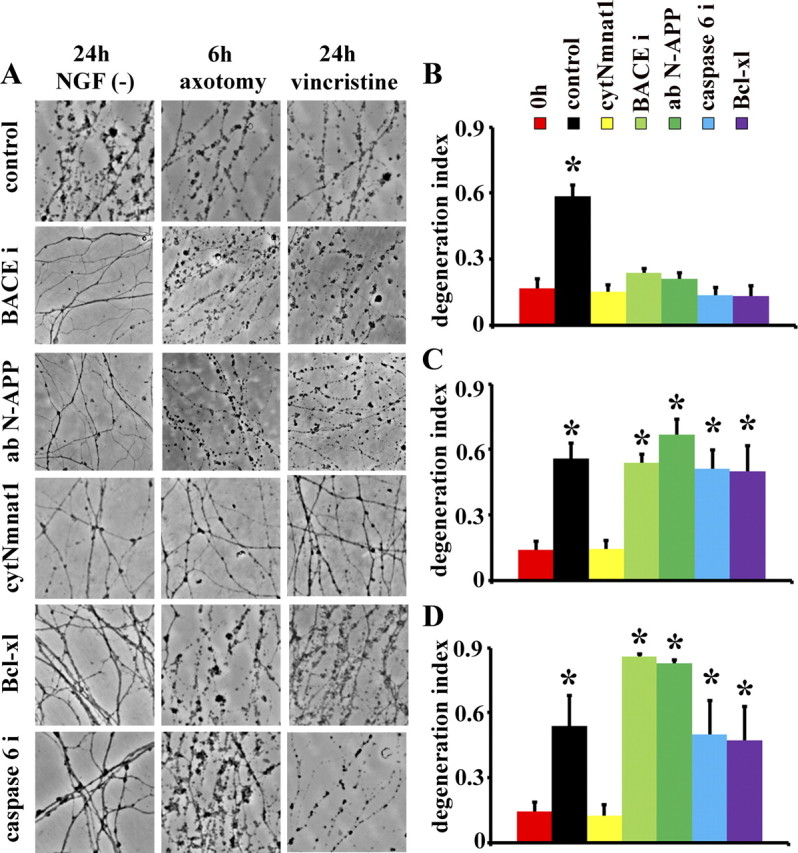Figure 1.

Distinct pathways of axonal degeneration activated by trophic factor deprivation, axotomy and vincristine intoxication. A, Dorsal root ganglia (DRG) were cultured for 5 d and axonal degeneration was induced by NGF withdrawal [NGF (-)], axotomy or vincristine. Treatment with the BACE inhibitor (BACEi; OM99-2), which inhibits APP cleavage, or anti-N-terminal APP-blocking antibody (ab N-APP) blocked axonal degeneration caused by NGF withdrawal, but not degeneration caused by axotomy or vincristine. Similarly, caspase 6 inhibitor (Caspase 6i; zVEID-FMK) and overexpression of Bcl-xl delayed axonal degeneration caused by NGF deprivation only. In contrast, expression of cytNmnat1 prevented axonal degeneration in all paradigms tested. B–D, Image analysis software was used to provide a quantitative analysis of axonal degeneration (i.e., degeneration index) after NGF deprivation (B), axotomy (C), and vincristine administration (D). These analyses highlight the fact that BACE inhibitor, N-APP-blocking antibody, caspase 6 inhibitor and Bcl-xl only block axonal degeneration stimulated by NGF withdrawal, whereas cytNmnat1 protected axons after all insults tested. Degeneration indices before treatment insults are indicated as 0 h. Significantly different (*p < 0.001, Student's t test) from neurons at time 0 (0 h NGF withdrawal).
